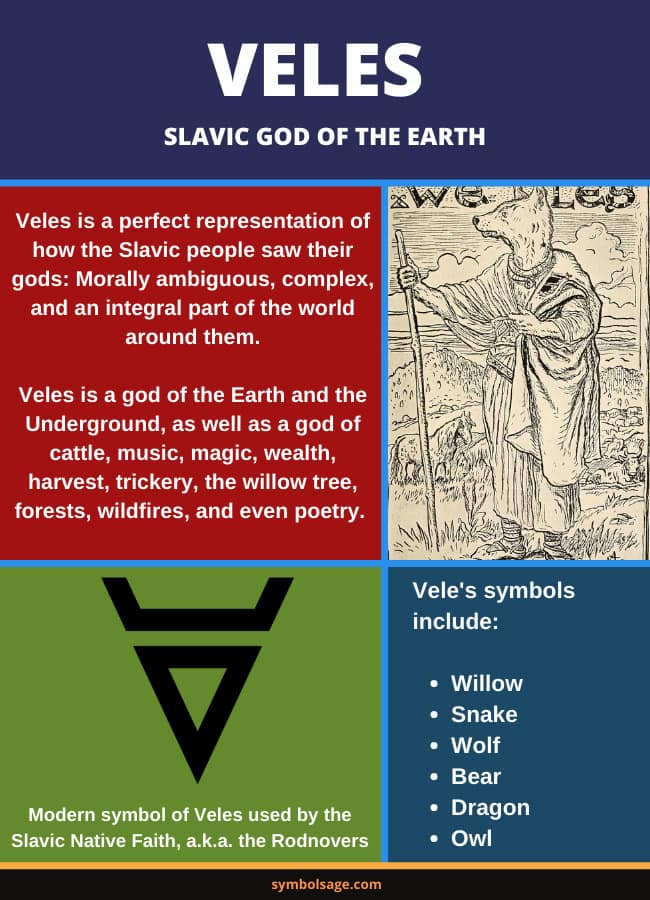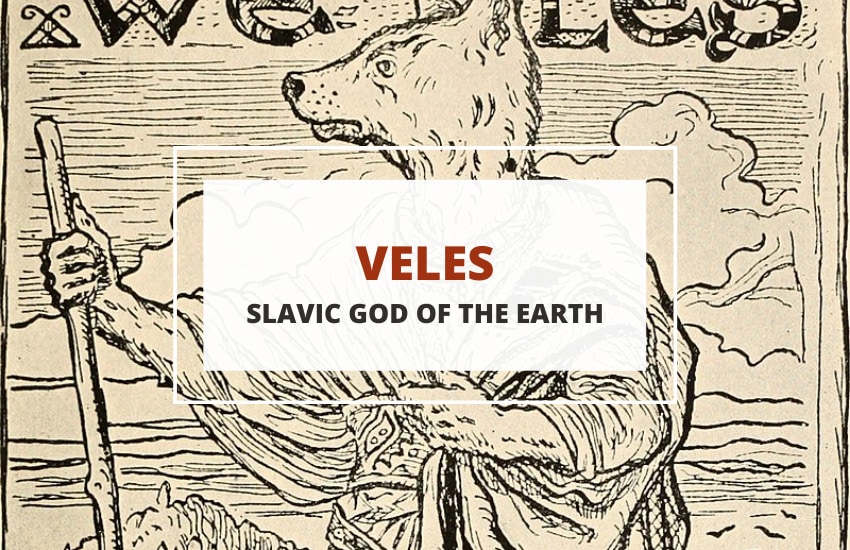
Table of Contents
Veles is one of those ancient Slavic gods that can be found in virtually every Slavic pantheon. From the Kievan Rus to the Balkans and to Central Europe, Veles is a god of the Earth and the Underground, as well as a god of cattle, music, magic, wealth, harvest, trickery, the willow tree, forests, wildfires, and even poetry.
While he’s generally considered to be a sinister deity in some myths, Veles is also revered by many. Let’s take a look at the myths behind this multifaceted deity, and whether they are as complicated as his worship.
Who is Veles?
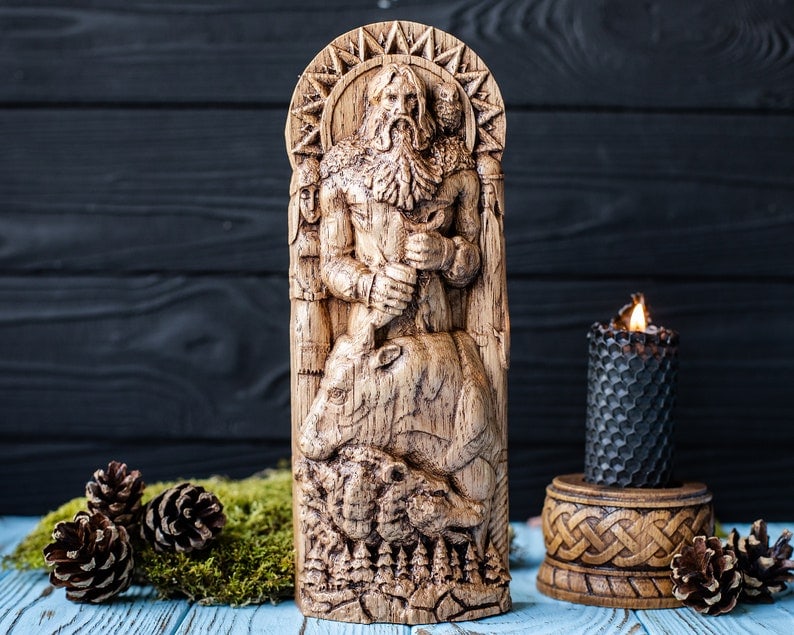
Often portrayed with elk horns on his head and with a wooly bear hide on his back, Veles is first and foremost a god of the Earth. However, although he’s associated with harvests, he isn’t a fertility deity as most Earth gods are in other mythologies. Instead, he’s viewed as a guardian of the Earth as well as of the Underworld beneath it. As such, he’s also viewed as a shepherd of the dead and not just of cattle.
Veles is also notably a shapeshifter. He most often shifts into a giant snake or a dragon. He’s also been seen in bear and wolf forms, as well as a few others. This reinforces his image as a primal and animalistic god, one that’s of the Earth.
Veles is so ancient that we don’t even know the exact meaning of his name. Many believe that his name comes from the Proto-Indo-European word wel for wool. That’d make sense given that he’s also a shepherd god of cattle. There are depictions of him in his snake form, lying in a bed of black wool in the roots of the Slavic World Tree.
Veles is also called Volos which in Russian and Ukrainian means hair – also fitting, given that he’s often shown to be extremely hairy. even in his human form.
Veles – The Thieving Snake
As a primal deity and a god of the Underworld, Veles is often used as the villain in most Slavic myths. He’s often the antagonist in myths about the main Slavic deity – the thunder god Perun. Veles and Perun are enemies in most Slavic pantheons. One of the main myths in which they both feature is the story of how Veles stole Perun’s son (or wife or cattle, depending on the myth).
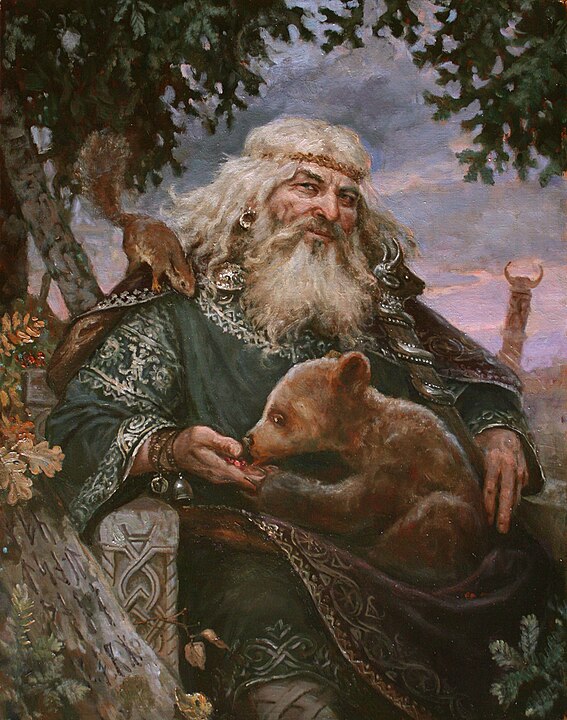
In most variants of the myth, Veles transformed into his snake form and slithered up Perun’s oak tree (the opposite of Veles’ willow tree). As he climbed the oak, Veles reached Perun’s home in the sky. In the most popular version of the myth, Veles then kidnapped Perun’s tenth son Yarilo and brought him back to his domain in the Underworld.
Veles didn’t kill or harm Yarilo. Instead, he raised him as his own and Yarilo grew to be a major fertility deity in Slavic mythology.
Veles’ Stormy Battle With Perun
Needless to say, Perun wasn’t happy about his son’s kidnapping. This is what led to the famous Slavic “Storm Myth”. It tells the story of the great battle between Perun and Veles. The two titans fought in a huge thunderstorm, which is why Veles too is sometimes associated with storms.
The battle started when Veles crawled out of his Underworld and once more started slithering up Perun’s tree. The thunder god responded by tossing mighty bolts of lightning at the giant snake, driving it away. Veles then tried to hide by shapeshifting into various things – animals, people, and even trees.
At the end of the storm myth, Perun prevails and manages to kill the mighty serpent. The rain that usually follows powerful thunderstorms is believed to be the remnants of Veles’ body, shattered by Perun’s thunder and lightning.
The Many Domains of Veles
Despite being viewed as a god of the Underworld, a trickster, and an enemy of Perun, Veles isn’t seen as strictly evil in most Slavic traditions. That’s because the Slavic people had more of a naturalistic rather than a moralistic view of their gods. For them, the gods were just representations of nature and the cosmos. They were neither good nor evil – they just were.
So, while Veles – as a god of both the Earth and its many dark secrets and a god of the Underworld – generally took the antagonistic role in most myths, he still wasn’t “evil”. Instead, he was worthy of worship like any other god, especially if you wanted a good harvest or safety during your travels across the earth.
Veles was worshipped as one of the three aspects of the Slavic god Triglav (Three Heads) – the Slavic trinity of Perun, Veles, and Svarog.
Veles was also worshipped by traveling musicians and poets. He was the patron they prayed to for protection from the Earth during their travels.
Another domain that Veles’ ruled over was magic, as the Slavic people believed magic came from the Earth. That’s why he is a big part of the Slavic Kukeri festival, practiced mostly in Bulgaria. During that festival, people dress as big wooly guardians, often with bells and horns on their heads, not dissimilar to Veles himself. Dressed like that, the people dance in and around their villages to scare the evil spirits away. Even though this is a strictly pagan ritual and Bulgaria is very much a Christian nation today, the Kukeri festival is still organized every year for his cultural significance and the sheer fun it entails.
Veles and Christianity
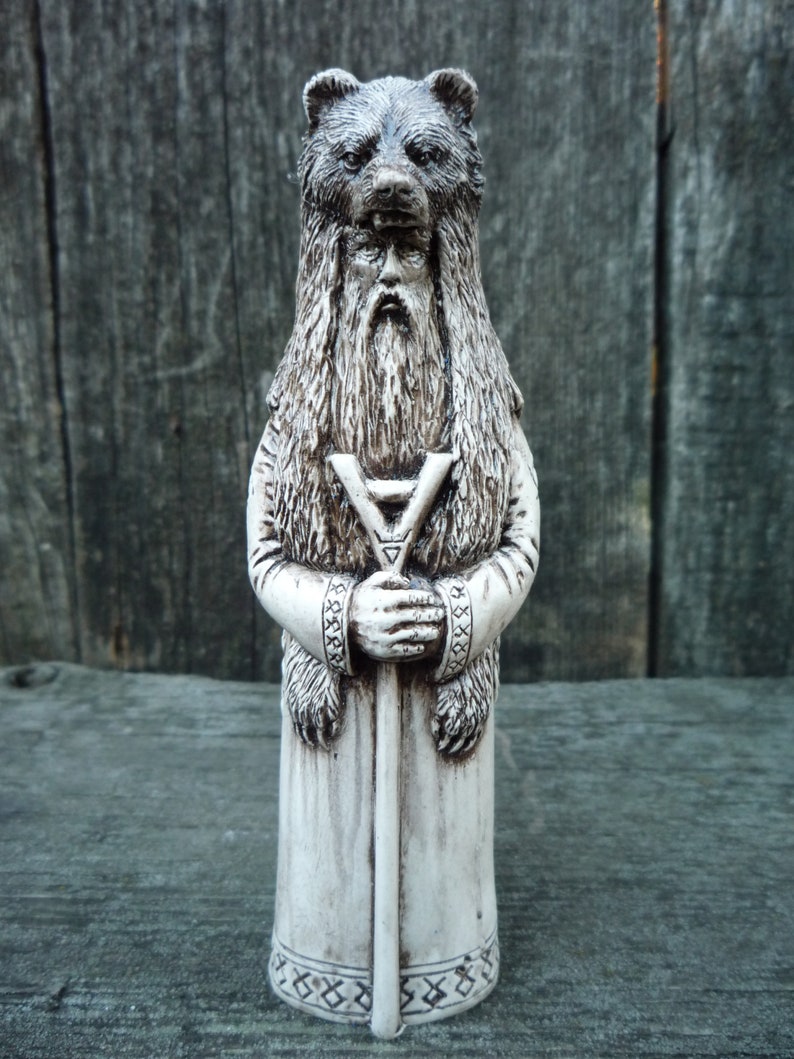
Even though all Slavic nations are Christian today, most of their pagan roots have seeped into their modern Christian traditions and believes. This is especially true for Veles whose roots can be found in many different myths and practices.
The first and most obvious association is that between Veles and the Christian Devil. As a typically horned god of the Underworld that also transforms into a snake, Veles quickly became associated with Satan once Christianity began spreading through Eastern Europe.
At the same time, the shepherd role of Veles associated him with Saint Blaise, a Christian martyr and saint in Armenia who was also a protector of cattle.
Veles’ wealth-giver and trickster persona, particularly in Eastern Europe, also meant that he was quickly associated with and superseded by St. Nicholas – himself the origin of Santa Claus.
Even though Veles was largely replaced by Christian myths and saints, however, many of the traditions that originated with him are still practiced. For example, many musicians, especially folk bands that play at weddings or special events and holidays, don’t start playing until the host has given a toast and has poured the first sip of his glass onto the ground.
This ritual used to represent a payment or a sacrifice to Veles so that he would bless the event and the musicians themselves. Even though the Veles cult is long-gone, little traditions like this one still remain.
Symbolism of Veles

Veles’ symbolism may seem all over the place at first but it starts to make sense when you read into it. After all, Veles is a god of the Earth and there are many things that come from the earth or are associated with it.
First and foremost, Veles is known as Perun’s enemy. The earth and the sky are in a constant battle in Slavic mythology and even though one is “good” and one is “bad”, both are worshipped and revered.
More than that, Veles is also a god of the Underworld and a shepherd of the dead. As such, he isn’t strictly evil. There doesn’t seem to be any myths of him tormenting or torturing the dead – he simply shepherds them into the afterlife and looks after them. In fact, some descriptions of Veles’ Underworld portray it as luscious green and fertile.
Lastly, as an Earth deity, Veles is also a god of everything that comes from the Earth – the crops, the trees and forests, the animals in the forests, the wealth people dig out of the Earth, and more.
In Conclusion
Veles is a perfect representation of how the Slavic people saw their gods. Morally ambiguous, complex, and an integral part of the world around them, Veles represented over a dozen things for the Slavs, simply because that’s what the Earth represented as well. An enemy of the sky god Perun but a friend of musicians and farmers, and a shepherd of the dead, Veles is a wonderfully bizarre deity to encounter.
